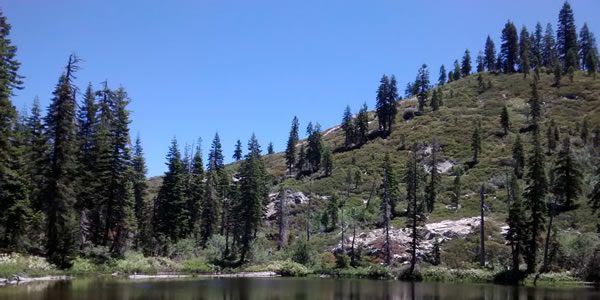The acceptance of anthropocentrism by Christians is due not only to a syncretism with a cultural modern understanding but also to a reaction to a false dilemma that is often presented. Disillusioned with an anthropocentric view of nature that offered little motivation for environmental concern, many have turned to a view of the cosmos that does not elevate man over nature. Dale and Sandy Larsen in While Creation Waits observe that “In many environmental circles the native American is looked to as the ideal of living in harmony with the earth” (36). Apart from aboriginal religions an eastern view of oneness with the cosmos is embraced by many who care deeply about the environment. The rejection of anthropocentrism as anti-environmental has given rise to these forms of biocentrism which view man as not superior over nature but one with nature.

One particular expression of biocentric environmentalism is “Deep Ecology” with its two “ultimate norms”: Self-realization and biocentric equality. Self-realization is based upon the assumption that an individual extends beyond the limits of his body and is one with all of nature. Biocentric equality affirms that “all things in the biosphere have an equal right to live and blossom and… are equal in intrinsic worth” (Devall and Sessions 67). But not only is man unified with the whole cosmos, God and nature are also one: “What many people are demanding is… a radically new faith – a reuniting of what the Age of Reason split apart: nature and God” (Larsen 36).
Because of the reaction to anthropocentrism with biocentrism, much of the contemporary environmental movement is headed by adherents to paganism and different forms of earth-worship. As illustrated by my experience at Bible College, many Christians have come to equate environmentalism with the religious beliefs held by many of its supporters. The biblical doctrine of the imago dei¸ man being created in the image of God and thus having a special place in nature, contradicts biocentrism. The Christian response to biocentrism has generally been a pendulum swing back to anthropocentrism. Fred VanDyke harshly criticizes this response: “The solution to the problem is not further isolation from God’s creation but a powerful witness to the one true God. If we stand back and no longer profess God as Creator, we will see a resurgence of paganism from those in the environmental movement we’ve abandoned” (137-138).
David Toolan observes in At Home in the Cosmos “environmentalists have confronted us with a false choice in this respect: between anthropocentrism and biocentrism” (2). A biblical outlook embraces neither, but holds to a view of the earth as theocentric. This view is derived from the biblical teachings on both man’s place in creation and God’s ownership of and attitude towards the cosmos.
Dr. Hans Schwarz admonishes Christians at the North American Conference that “a Christian approach toward ecological consciousness should… begin by recalling humanity’s place in the created order as it lives in communion with the earth and with God” (12). The Genesis account of Creation provides the first and most controversial biblical text concerning the relationship between humans and nature. Quoted by Christian anti-environmentalists in support of anthropocentrism, criticized by Lynn White as underlying the ecological crisis, Christian environmentalists nonetheless find support in Genesis 1&2 for a theocentric outlook and even a basis for a biblical environmental ethic.
Genesis 1:28 is quoted in nearly every writing on Christianity and the environment: “God blessed them and said to them, “Be fruitful and increase in number; fill the earth and subdue it. Rule over the fish of the sea and the birds of the air and over every living creature that moves on the ground”. Issa J. Khalil argues at the North American Conference that “The biblical term “dominion”… does not mean, and has never meant, domination of nature by “Lord Man” “(28). The mandate to rule was given to man prior to the fall, hence it could not have been an exhortation to exploit the earth for selfish purposes, exploitation and selfishness are sins, results of the fall.
Although man became sinful and fallen, there is no indication that he has been removed from a place of dominion over creation. How then is post-fall, sinful man to exercise his dominion over nature? The answer lies in the biblical view of authority. Christ most vibrantly illustrates the view of dominion as servanthood (DeWitt, Caring 41). His example of washing the disciples feet most vividly illustrates that “in the eyes of God, the one who rules is the one who serves” (VanDyke 93). Man’s position of authority is one of stewardship, men are “tending the garden” on behalf of their master, so to speak. Jesus’ emphasis on faithful stewardship in his parables thus is an exhortation to take seriously man’s responsibility in caring for creation.
Although the Bible does not support a biocentric view in which man is one with nature, the connection between humans and the environment is seen in scripture, especially in the writings of the prophets. Just as through the sin of Adam and Eve all of creation was cursed, so God’s judgment of sin affects the environment as well. Noah’s flood did not only destroy sinful humans but animal and plant life as well. Whenever Israel sinned, the land was cursed, when Israel did what was right before God, the land was blessed. The close relationship between man and the rest of creation speaks against an anthropocentric view that places man above and separate from creation.

















